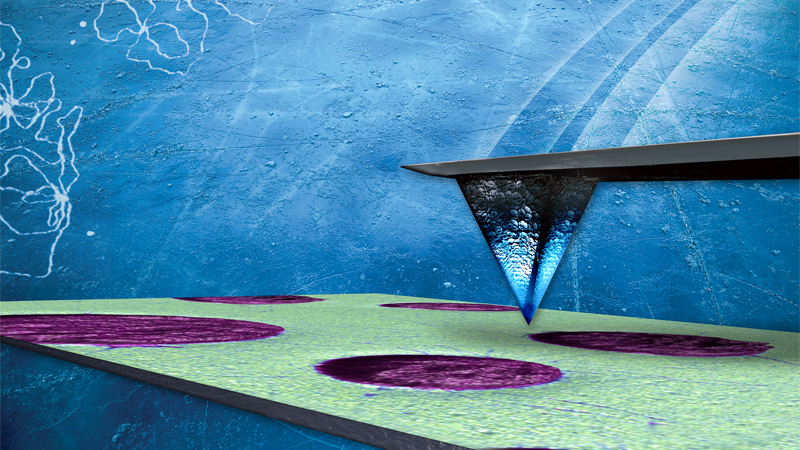Torsional Resonance Mode (TR‑Mode)
Torsional resonance is an alternative to TappingMode for high‑resolution topographic imaging on a wide range of samples. TR‑Mode has been applied for high‑resolution imaging on a variety of samples, including soft biological samples and polymers. The topographic images are complemented by torsional resonance phase images, which provide a highly sensitive contrast based upon anisotropic material properties.
In TR‑Mode, the torsional resonance amplitude (or phase) is used to control the feedback loop and maintain the tip‑surface relative position through lateral interaction. The nature of tip‑surface interaction of TR‑Mode facilitates phase measurements to resolve the in‑plane anisotropy of materials, as well as measurements of dynamic friction at the nanometer scale.
TR‑Mode can also be of interest for samples that require highly sensitive phase detection. In general, the Q‑factor of the torsional resonance is considerably higher than the Q‑factor for the flexural mode, resulting in higher sensitivity. A torsional resonance modulation can also be applied in a wide variety of operating modes. These typically have the same goal to resolve in‑plane (often anisotropic) sample properties (e.g., frictional, magnetic field, electric field, and conductivity).
